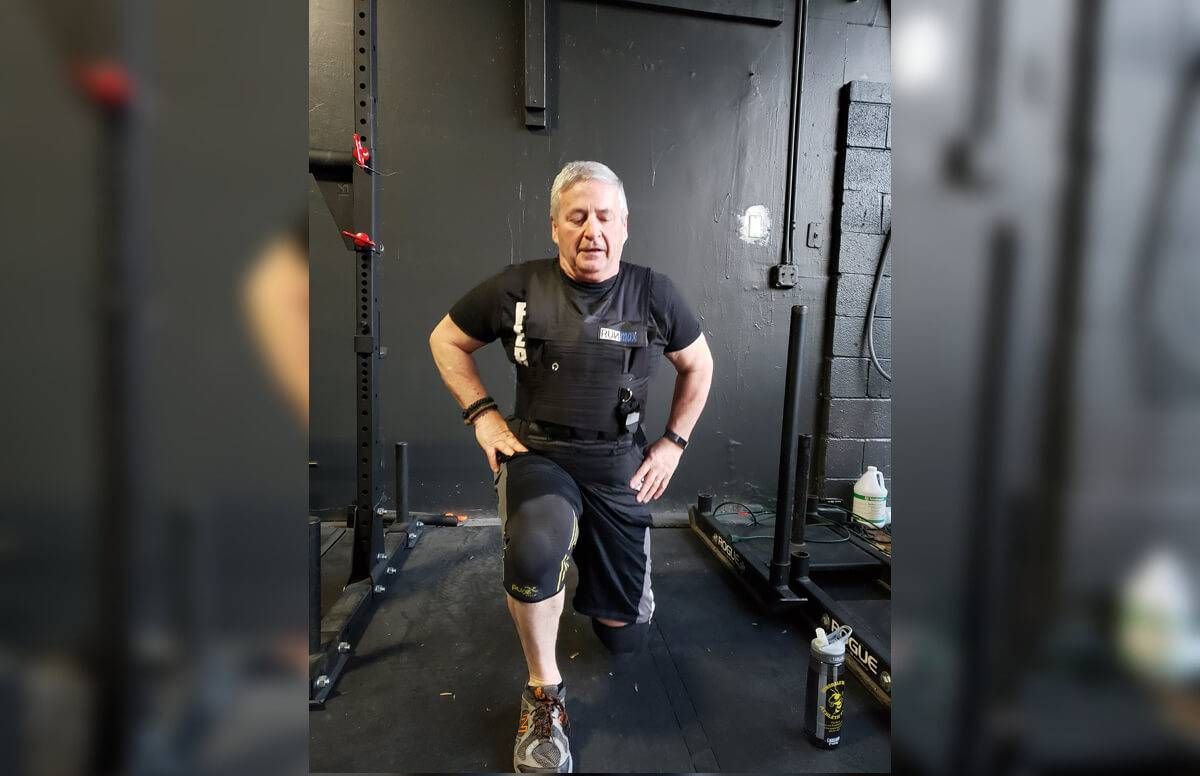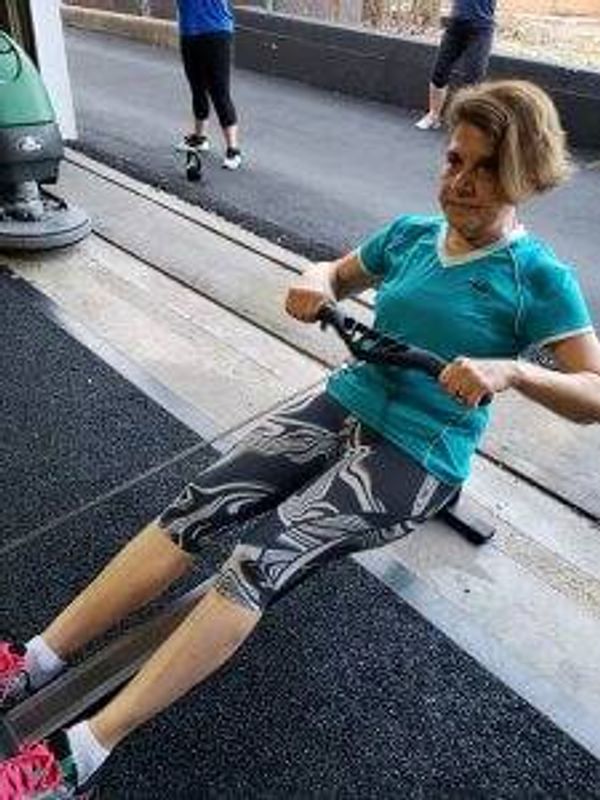Pain and Gain: Why Some People Choose CrossFit
Many older adults strive for the functional benefits of the rigorous program
At a recent wedding, 68-year-old Ellen Bonk showed a group of millennials how to “get down” to the Isley Brothers’ Shout. “When they sing ‘a little bit softer now,’ there was only one other person who got down lower to the floor than me and still got back up,” Bonk says.

When Bonk, a former hospital administrator, retired a few years ago, she could barely squat a few inches. The suburban Chicago woman had a bad knee and was out of shape from a sedentary lifestyle. Now, after a year participating in CrossFit classes, she can squat nearly to the ground and can bench press 50 pounds. “I can do things I never dreamt I’d be able to do or even would have tried,” she says.
Bonk is among a growing number of CrossFit enthusiasts worldwide. The high intensity functional fitness program combines strength training with aerobic activity. It also promotes a diet of lean meats, nuts, vegetables and fruit.
Former gymnast Greg Glassman opened the first CrossFit gym in 2001. There are now 15,000 facilities worldwide, making it one of the fastest-growing fitness chains.
In CrossFit, participants perform functional exercises, meaning strengthening and aerobic activities that train and develop muscles to perform everyday tasks. For example, squats replicate the movement required to sit in a chair, and deadlifts mimic bending over to pick up a bag of groceries.
Classes vary daily and can be scaled to any fitness level. Still, some older participants with physical limitations can feel intimidated working out with participants who can do things they can’t, like lifting barbells overhead or climbing ropes.
CrossFit Classes for Older Adults
That’s why CrossFit introduced special classes two years ago for participants who are older than 50. The movements in these classes are less complex and the exercises less rigorous. Translation: No rope climbing.
Some CrossFit gyms call them “Legends” classes. Bonk’s gym, CrossFit Iron Flag in Westmont, Ill., calls them “Masters” classes.
But, whatever you call them, don’t call them easy!
At Iron Flag’s 6 a.m. Masters class, nine participants grimace as they read the hour-long workout sheet Coach Melissa Gasper printed on the whiteboard: 63 dumbbell snatches, 63 wall balls, 63 kettlebell swings, 63 dumbbell push presses and 63 rows.
A collective groan erupts from the group. “Why 63? Why not 70?” jokes 70-year-old Frank Getz.
“You’ve done way more of these in other workouts,” Gasper shoots back. “Think about how you want to break them up to keep moving.”
After a 15-minute warm-up that includes planks and stretches, the group gets down to business. The first exercise involves tossing a weighted ball up a wall, then squatting to catch it.
Individual Attention
Gasper has been coaching this group three days a week for a year, so she knows each participant's abilities and physical challenges. Getz has bad knees. Mary Tsoulos, 69, has arthritis in her hips. Tony Malone, 59, is recovering from shoulder surgery to repair an old sports injury. All of the group members need to modify some exercises.
Gasper walks slowly behind the participants as they perform each movement. “I’m making sure their bodies are moving in the plane they’re supposed to be in,” she explains. “Once you start adding weight, if your mechanics aren’t good, you’re going to injure yourself.”
Concern About the CrossFit Program’s Safety
Safety remains a big question for CrossFit, in general, not just for older adults. As yet, there hasn’t been a comprehensive study on the risk of injury for those involved in the program.

A handful of studies, including one released last fall by the Orthopedic Journal of Sports Medicine (OJSM), found CrossFit to be relatively safe compared to other fitness programs. But the OJSM study also found the risk of injury is greater for people during their first year of CrossFit training and for those who participate fewer than three times a week. The authors of the study recommended that CrossFit trainers offer beginner classes to help prevent injuries.
Dr. Ross Arena, head of physical therapy at the University of Illinois-Chicago, says he supports any exercise program that gets people moving. But he advises patients with arthritis or back and knee issues to be cautious before starting CrossFit.
“You probably would want to have those things checked out by a medical professional who would do additional diagnostic tests,” Arena says.
CrossFit Iron Flag interviews all new participants and puts them through six personal training sessions before they begin classes. Co-owner Kelly McGriff-Culver says that allows her to assess each participant's physical capabilities and limitations. “Maybe they don’t have overhead range of motion, so they really can’t work on anything overhead until they work on mobility issues,” she says.
Exceeding Their Own Expectations
As the clock approaches 7 a.m. at Iron Flag, all nine of Gasper’s Masters participants are sweaty, but satisfied. Everyone finished what they thought was an impossible workout in under an hour. “It’s what keeps them coming back. They don’t think they can do it, but then they do,” Gasper says.
McGriff-Culver says a quarter of the 200 participants at her gym are older than 55, a segment she thinks will keep growing.
CrossFit believes it’s crucial for older adults to stay active in a supportive community and maintain a healthy diet. “For this population, these behaviors can mean the difference between life and death or living at home versus a nursing home,” says company spokesman Russ Greene.
Malone won’t argue with that. He’s convinced CrossFit saved his life. Since joining the Masters class two years ago, he’s shed 50 pounds along with his diabetes medication. “If I didn’t do this, I might be on another medicine or injecting insulin. I was not going in a good direction,” he says.
Tsoulos credits CrossFit’s recommended diet and workouts with reducing her joint inflammation from arthritis and increasing her flexibility. “Until two years ago I couldn’t cross my legs,” she says. “I was in a movie theater and automatically crossed my legs and went, Wow!”


